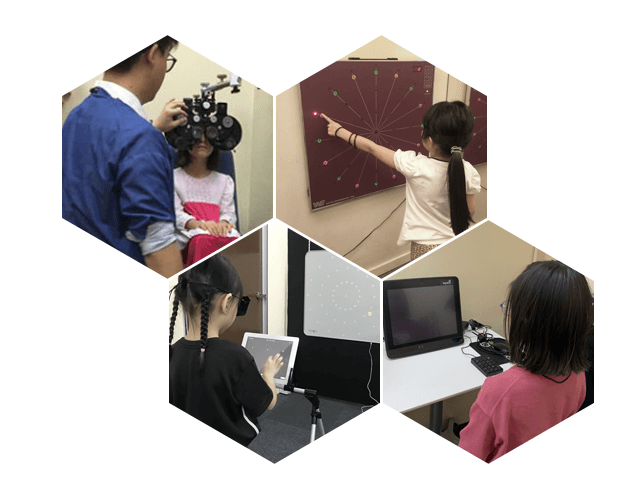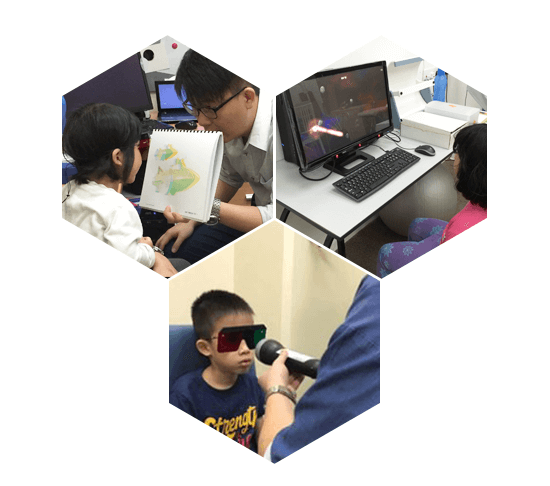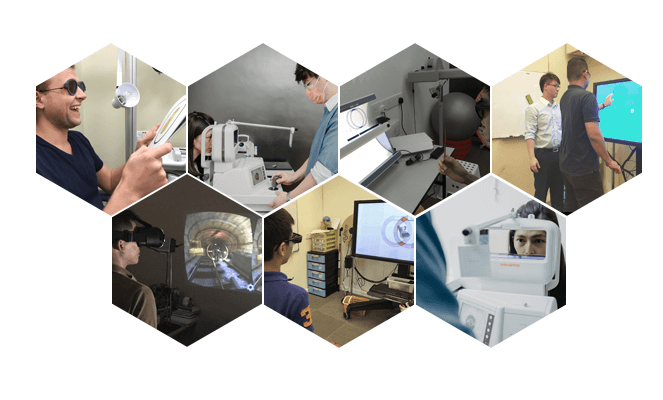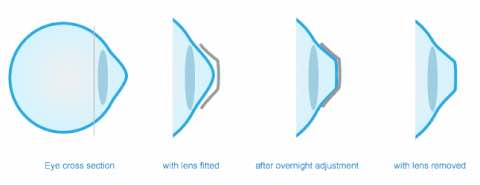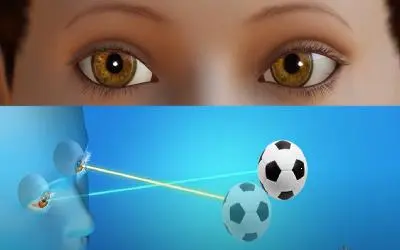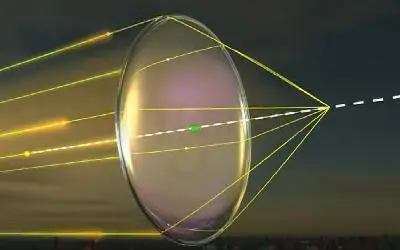Short-sightedness, often known as myopia, frequently occurs when both eyes aren’t in sync, leading to eye strain, especially when focusing on nearby objects like reading materials. It’s important to note that myopia can affect children as well as adults. Below are common questions about myopia, shedding light on concerns for both children and adults.
TABLE OF CONTENTS
What is ShortSightedness?
What Causes ShortSightedness?
What is Causing Short-Sightedness Amongst Children?
Why Doesn’t Everyone Become Shortsighted?
How Do We Slow Down Or Reverse Shortsightedness?
How Does Vision Therapy Work?
What Is The Difference Between Ortho-K And Vision Therapy?
When to wear glassess (short sighted glasses)?
Will Ortho K improve my vision better than traditional glasses or contact?
Short sighted VS long sighted?
Can short sightedness be cured?
How can I test if I am short sighted?
What can I do about Shortsightedness? Eye exercises I can do myself
WHAT IS SHORT SIGHTEDNESS?
https://www.youtube.com/watch?v=7W2ex_9HIjU
Short-sightedness, or myopia, causes distant objects to appear blurry while closer objects remain clear. This condition is often associated with the aging of the eyeball, making it more common among seniors. However, it’s crucial to note that myopia is increasingly affecting children as well.
WHAT CAUSES SHORTSIGHTEDNESS (RABUN JAUH 近视)?
Shortsightedness, also known as myopia, can occur due to various factors affecting the eye’s structure. This condition arises when the eyeball elongates, causing light to focus in front of the retina rather than on it. Consequently, objects appear blurry. One common cause involves the eyes straining when focusing on near objects like reading material, leading to an inability of the eyes to coordinate effectively. This difficulty in coordination can make it challenging to maintain focus on words or objects for extended durations, impacting activities like reading.
ARE YOU CONCERNED THAT YOU OR YOUR CHILD MIGHT BECOME SHORTSIGHTED?
With the increasing use of computers, smartphones, and tablets in our daily lives, there’s a growing concern about the rise in shortsightedness, or myopia, among both children and adults. At Neuro Vision Specialist Centre, we understand the importance of addressing this issue promptly. Scheduling a Vision Evaluation with our specialized Neuro-Developmental & Behavioral optometrist can help determine if you’re at risk of developing shortsightedness due to excessive screen time or other factors. Our goal is to provide proactive guidance on preventing shortsightedness before it becomes a concern.
Our dedicated Vision specialist has successfully helped children slow down the progression of shortsightedness using Ortho-K, a treatment that kids find comfortable and liberating. By combining this approach with activities like sports and studies, we aim to offer a solution that enhances their daily life without the hassle of glasses or contacts.
It’s important to note that, in many cases, we’ve not only reduced the need for prescriptions but also reversed shortsightedness. However, the success of treatment depends on individual factors contributing to the condition. A Vision Evaluation, distinct from a regular eye exam, allows our specialist to pinpoint the cause and tailor the best possible treatment plan. The encouraging news is that with appropriate interventions, nearsightedness can indeed be effectively managed.
WHY DOESN’T EVERYONE BECOME SHORTSIGHTED OR HAVE THEIR SHORTSIGHTEDNESS (RABUN JAUH 近视) GET WORSE?
When experiencing only shortsightedness (Rabun Jauh, 近视), it’s common for the condition to gradually worsen over time. However, issues arise when the eyes struggle to work together seamlessly or find it challenging to shift focus between close-up and distant objects. This difficulty in transitioning strains your eyes when viewing things up close, accelerating the progression of shortsightedness (Rabun Jauh, 近视) more rapidly.
HOW DO WE SLOW DOWN OR REVERSE SHORT SIGHTEDNESS (RABUN JAUH 近视)?
In many instances, we’ve successfully reduced prescriptions and even reversed shortsightedness (Myopia, Rabun Jauh, 近视). However, the effectiveness of these measures hinges on understanding the root cause behind the worsening shortsightedness. To gain clarity on your specific situation, scheduling a Vision Evaluation with our specialized Vision specialist, Mr. Stanley, is recommended. This evaluation, distinct from a regular eye exam, allows Mr. Stanley to pinpoint the underlying cause and devise the most effective treatment plan tailored to your needs. The encouraging news is that there are effective ways to address and manage nearsightedness.
MANAGING THE REASON FOR THE PROGRESSION OF SHORT SIGHTEDNESS
Addressing the underlying causes of shortsightedness often involves a tailored vision therapy program. This specialized therapy aims to retrain the eyes, reducing the strain experienced during activities like reading, writing, and prolonged computer use. By guiding the eyes to work more efficiently and comfortably, vision therapy enhances overall visual abilities for various tasks.
HOW DOES VISION THERAPY WORK?
Vision therapy typically involves weekly office visits where a series of specialized activities are performed, complemented by additional exercises to be done at home between sessions. Many daily activities, like reading, writing, using computers, playing games, or using smartphones, exert strain on the eyes, leading to increased effort or tightening of the eye muscles. Consequently, it becomes crucial to incorporate daily eye relaxation techniques through consistent home vision therapy exercises.
We’ve noted that patients managing myopia (Shortsightedness, Rabun Jauh, 近视) who diligently practice their prescribed eye exercises tend to experience quicker and more significant improvements compared to those who don’t adhere regularly to home vision therapy routines.
WHAT IS THE DIFFERENCE BETWEEN ORTHO-K AND VISION THERAPY?
Ortho-K can effectively halt the progression of shortsightedness. However, relying solely on Ortho-K means continuous dependence on this treatment to prevent further deterioration of shortsightedness throughout your life. Combining Ortho-K with vision therapy, which addresses the underlying causes of your shortsightedness, offers an opportunity to not only halt but potentially reduce your dependence on Ortho-K in the long run.
WHEN TO WEAR GLASSESS (SHORT SIGHTED GLASSES)?
Regarding your glasses, you have some flexibility in deciding when to wear them, within reasonable limits. This decision often depends on personal comfort and the necessity of clear vision in specific situations. For instance, if your ability to see the road clearly is compromised without glasses, it’s essential to wear them for driving safely.
Reference: Do I have to wear glasses?
SHORT SIGHTED VS LONG SIGHTED (FARSIGHTED VS NEARSIGHTED) HOW TO TELL THEM APART?
The key distinction between farsightedness and shortsightedness lies in where objects appear sharp and clear. Those who are nearsighted typically see nearby objects more distinctly, whereas individuals with farsightedness tend to have clearer vision for distant objects.
Farsightedness in children often arises from a refractive error present from birth. However, in many cases, this condition can improve as the eyes continue to grow and develop. Conversely, nearsightedness commonly emerges during childhood and often progresses during the adolescent years, stabilizing in early adulthood.
Reference: Nearsightedness and Farsightedness
CAN SHORT SIGHTEDNESS BE CURED?
Myopia develops when the eyeball overgrows, often during childhood, and may progress throughout the teenage years and into early adulthood. Once excessive eye growth occurs, it cannot be reversed or stopped. However, it is possible to slow down the progression of myopia through effective control treatments. It’s important to note that while there isn’t a cure for myopia, there are methods available to effectively CORRECT blurry distance vision.
Reference: Myopia Myths and treatments for shortsightedness
WILL ORTHO K IMPROVE MY VISION BETTER THAN TRADITIONAL GLASSES OR CONTACT?
Orthokeratology (Ortho-K), also referred to as Corneal Refractive Therapy (CRT), is a non-surgical method involving customized contact lenses. These lenses gently reshape the front surface of your eye (cornea) overnight, resulting in clear vision during the day without the need for glasses or regular contact lenses.
The goal of Ortho-K is to achieve vision correction comparable to traditional glasses or contacts. Specifically designed to address nearsightedness (Myopia, Rabun Jauh 近视), Ortho-K lenses are aimed at slowing down the progression of this condition. This treatment offers a potential solution that differs from what’s achievable through conventional glasses or standard contacts.
Find out more here
HOW CAN I TEST IF I AM SHORT SIGHTED?
The American Academy of Ophthalmology offers a printable vision test that you can use at home. To conduct the test, print the chart and place it on a wall about 10 feet away from where you’ll stand. Cover one eye and proceed to read the letters on the chart. As you progress down the chart, the letters may become progressively harder to see. The line where you can accurately identify most of the figures represents your visual acuity. Adjacent to the chart, you’ll find small numbers indicating your acuity, such as 20/20 or 20/40.
“A score of 20/20 is considered optimal, representing the ability of a healthy individual to see objects clearly from a distance of 20 feet. Therefore, a bottom number higher than 20, such as 20/40 or 20/60, may indicate myopia, suggesting that clear vision occurs at a closer distance than the typical 20 feet.
printable at-home eye test : https://www.aao.org/eye-health/tips-prevention/home-eye-test-children-a…
WHAT CAN I DO ABOUT SHORT SIGHTEDNESS? EYE EXERCISES I CAN DO MYSELF
- 20-20-20 Rule: Remember the 20-20-20 rule: Take a 20-second break every 20 minutes and focus your eyes on something at least 20 feet away. This simple habit can significantly reduce eye strain and fatigue caused by prolonged screen time.
- Change Your Focus: Challenge and refresh your focus by holding a finger a few inches from your eye, focusing on it, and then gradually moving it away while maintaining focus. Shift your gaze to the distance and then bring your focus back to your finger as you slowly move it closer again. Repeat this exercise on both sides to give your eyes a beneficial workout.
- Figure 8: Sit comfortably and trace a figure 8 pattern on the floor with your eyes. Follow the pattern for about 30 seconds, then switch directions. This exercise helps to improve eye mobility and flexibility.
-
Scan the room: Find a comfortable spot, relax, and take a moment to scan the room. Focus your attention on various objects in the room, both near and far. This practice not only eases eye strain but also encourages mindfulness and relaxation.
Reference: https://www.webmd.com/connect-to-care/lasik/do-eye-exercises-for-nearsi…
ARE YOU CONCERNED BECAUSE YOUR SHORT SIGHTEDNESS (MYOPIA, RABUN JAUH 近视) IS GETTING WORSE, INCREASING IN POWER? NEED STRONGER AND STRONGER GLASSES?
Shortsightedness worsening can stem from various reasons, and the treatment approach depends on the specific cause behind it. The good news is that we specialize in addressing these concerns and tailoring treatments accordingly. You’re in the right place to explore personalized solutions that can effectively manage and potentially slow down the progression of shortsightedness.

